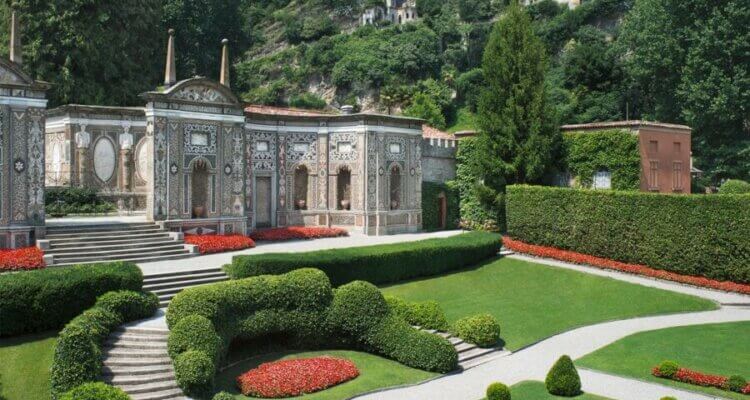Villa D’Este, a Renaissance jewel at the gates of Rome
Villa d’Este is one of the symbols of Italian Renaissance and is listed as a UNESCO World Heritage Site. Situated in Tivoli, near Rome, the villa is a gem of architectural and landscape splendor. The extraordinary complex is famous all over the world for its splendid fountains characterized by wonderful and suggestive water displays and for being the most beautiful example of the Italian Renaissance garden in Europe.
The villa was commissioned by Cardinal Ippolito II d’Este, a former governor of Tivoli and son of Lucrezia Borgia. The work was carried out by the ingenious architect Pirro Logorio. The works, which started in 1550 and lasted for about 20 years, had to overcome many difficulties. The water gushing from the many fountains, which can still be appreciated today in their great splendor, comes directly from the River Aniene through a 2,000-feet underground channel.
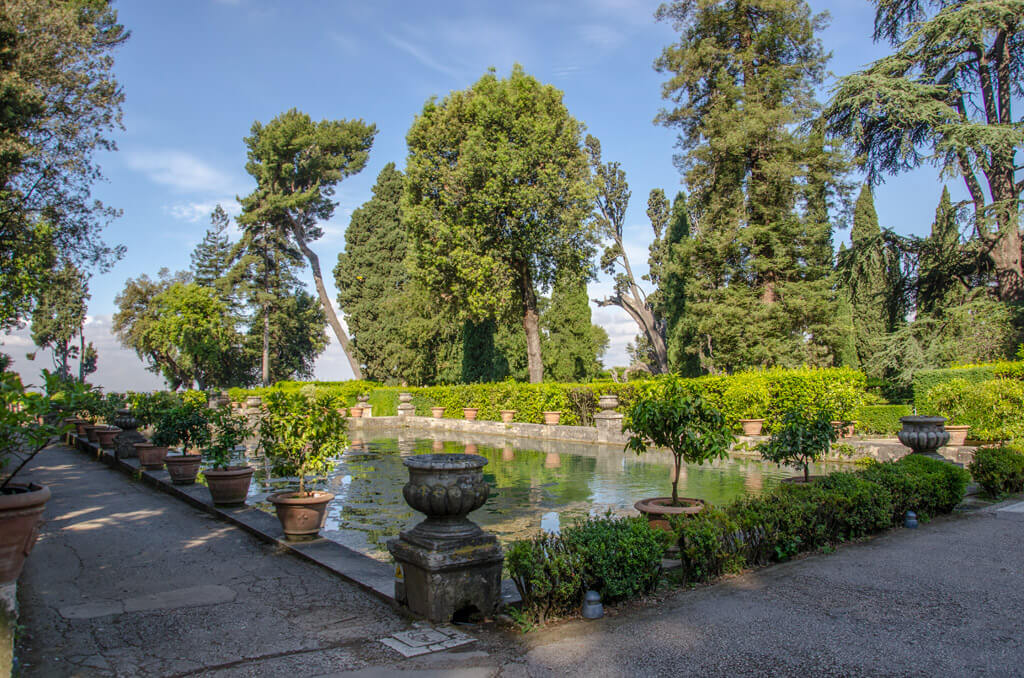
The whole complex extends for 10 acres and includes the residential palace Palazzo d’Este, a garden adorned with tree- and hedge-lined avenues and around a hundred fountains which are real works of art. With its impressive concentration of fountains, nymphs, grottoes, plays of water, and music, it constitutes a much-copied model for European gardens in the mannerist and baroque styles.
Palazzo d’Este
Palazzo d’Este is characterized by an elegant façade opened by the so-called Vialone or great avenue, bounded by the Grand Loggia and the Fountain of Europe. Once through the main entrance you reach a stairway leading up to a great ceremonial hall. From here you can go directly to the frescoes of the Appartamento Nobile. Just under the double loggia there is an ancient nymphaeum which used to contain the Fountain of Leda, today housed in the Galleria Borghese in Rome. The building’s three floors also contain other extraordinary rooms like the Appartamento Vecchio or Superiore, the Sala delle Storie di Salomone and the Appartamento Inferiore, characterized by the Hall of the Fontanina and the fresco of Ercole Sassano.
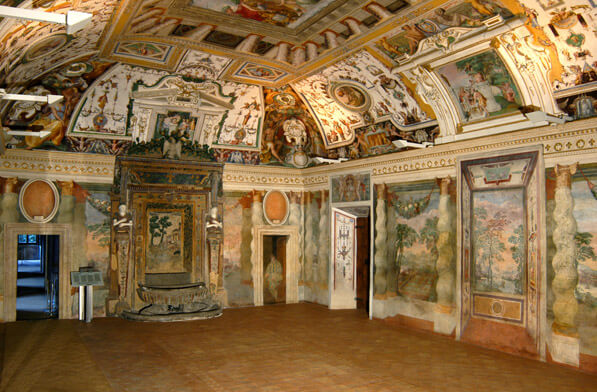
Photo: M. Benedetti/www.villadestetivoli.info
The garden is generally considered within the larger –and altogether extraordinary– context of Tivoli itself: its landscape, art and history which includes the important ruins of ancient villas such as the Villa Adriana. Cardinal Ippolito II d’Este, after the disappointment of a failed bid for the papacy, brought back to life here the splendor of the courts of Ferrara, Rome and Fontainebleau and revived the magnificence of Villa Adriana. Governor of Tivoli from 1550, he immediately nurtured the idea of realizing a garden in the hanging cliffs of the “Valle gaudente”, but it was only after 1560 that his architectural and iconographic program became clear—brainchild of the painter-architect-archeologist Pirro Ligorio and realized by court architect Alberto Galvani.
The rooms of the Palace were decorated under the tutelage of the stars of the late Roman Mannerism, such as Livio Agresti, Federico Zuccari, Durante Alberti, Girolamo Muziano, Cesare Nebbia and Antonio Tempesta. The work was almost complete at the time of the Cardinal’s death in 1572. From 1605 Cardinal Alessandro d’Este gave the go-ahead to a new program of interventions not only to restore and repair the vegetation and the waterworks, but also to create a new series of innovations to the layout of the garden and the decorations of the fountains. Other works were carried out from 1660-70; these involved no less a figure than Gianlorenzo Bernini.
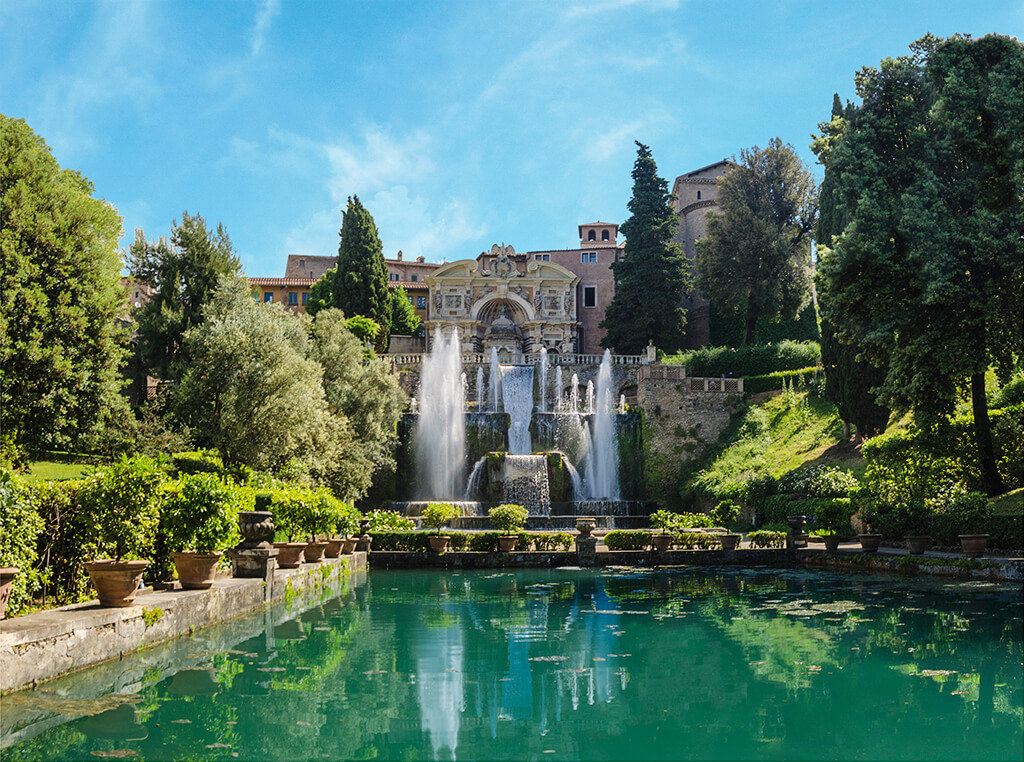
Decay and Resoration
In the XVIIIth century the lack of maintenance led to the decay of the complex. The garden was slowly abandoned, the water works – no longer used – fell into ruin, and the collection of ancient statues – enlarged under Cardinal Ippolito, was disassembled and scattered. At the outbreak of the first world war the villa became a property of the Italian State, and during the 1920s it was restored and opened to the public. Another, radical restoration was carried out immediately after the Second World War to repair the damage caused by the bombing of 1944.
Most of the external fountains can be considered real theatres of water, such as the Rometta, characterized by the sculpture of an enthroned divinity Rome, or the imposing Fontana dell’Ovata, more commonly known as the Fontana di Tivoli, an architectural gem rounding off the equally famous Viale delle Cento Fontane (avenue of the one hundred fountains). Of considerable interest is also the Fontana del Bicchierone, designed by Gian Lorenzo Bernini and the so-called musical fountains: the Fontana degli Uccelli and the Fontana dell’Organo, both of which produced a musical sound from the water running through them. The Fontana della Proserpina is instead a stern structure consisting of a central nymphaeum protected by two tortile columns, and was once thought to be the Fountain of the Emperors. More recent, but equally beautiful, is the Fountain of Neptune, one of the places most photographed by tourists and locals alike.
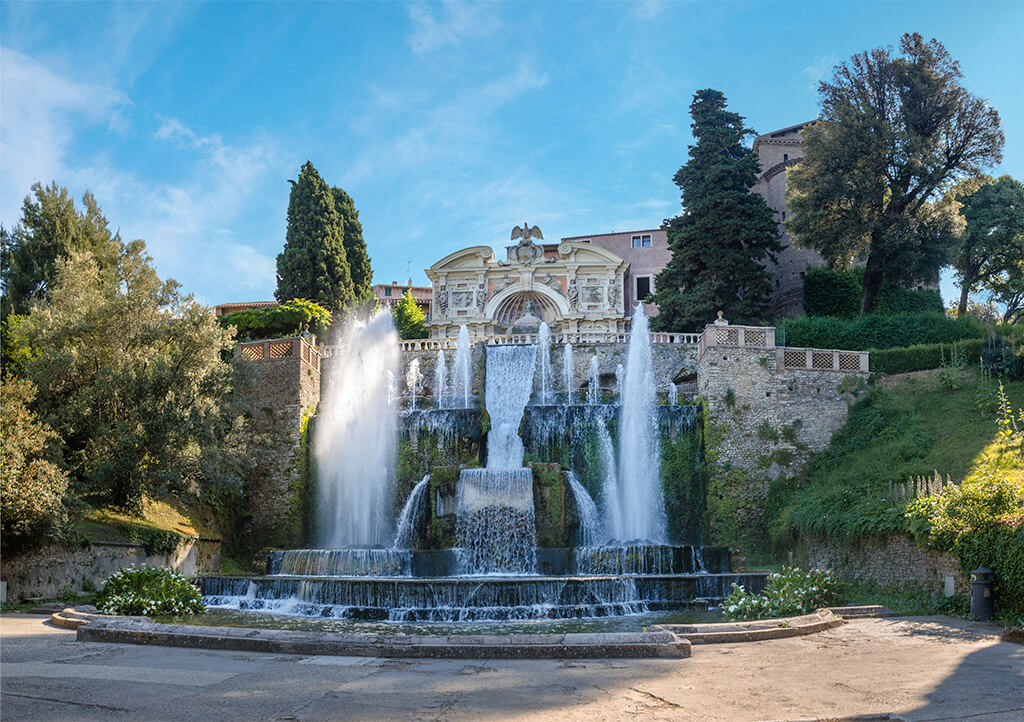
The Villa is normally closed on Mondays. If Monday is a public holiday, then the Villa will stay open, but will be closed the following Tuesday. The city of Tivoli is situated 20 miles north-east from Rome.
Photos: Comune di Tivoli



